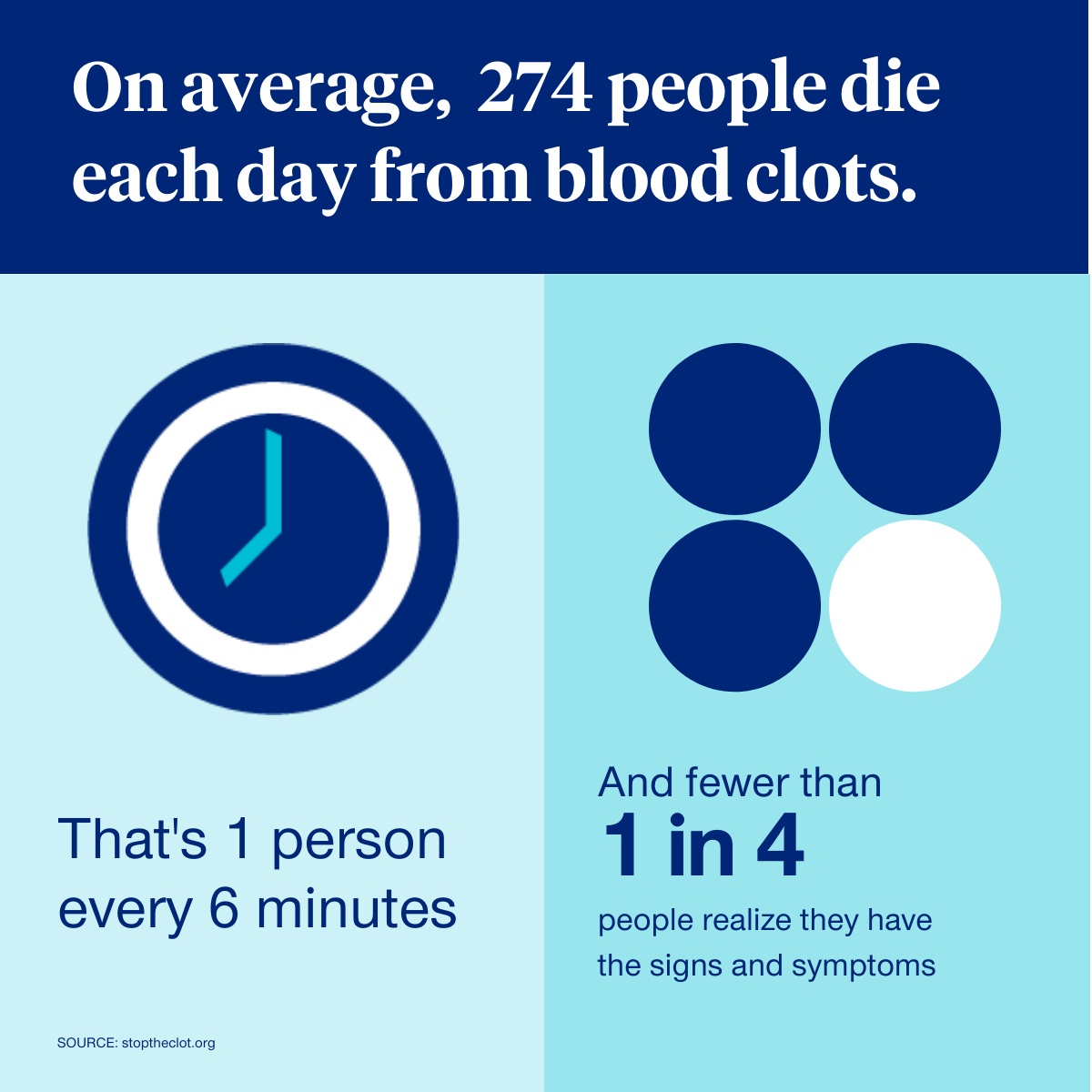Why blood clots often go undetected
On average, 274 people die each day from blood clots – that’s one person every six minutes. Yet, what may be even more surprising is that fewer than 1 in 4 people realize they have the signs and symptoms of a blood clot.
March is Blood Clot Awareness Month, so it may be a good time to understand the risks, signs and symptoms — and potential prevention of blood clots.

“Blood clots can affect anyone as they do not discriminate by age, gender or ethnicity,” said Dr. Nicole Brady, chief medical officer, UnitedHealthcare of Wisconsin and Michigan. “Many blood clots are preventable and can be safely treated but most people have little or no awareness of blood clots. That is why education about blood clots and blood clot prevention can save lives.”
What is a blood clot?
Your body is made up of a tunnel of arteries and veins, which carries blood from the heart to the rest of your body. A blood clot occurs when a specific type of blood cell, known as platelets, forms a clump in a blood vessel, acting like a plug to slow or even stop bleeding after a cut or injury. But blood clots can also develop when they aren’t needed, which may lead to serious health problems, such as intense pain, stroke, heart attack and even death.
Who is most at risk?
Although blood clots can affect anyone — from infants and young children to seniors — some people may be more at risk than others including:
- Women using birth control methods or hormone therapy containing estrogen
- Women who are pregnant, including up to six weeks after childbirth
- People with a family history of blood clots
- Individuals who are overweight
- Smokers
- Those 55 or older
- Individuals suffering from long-term chronic conditions, such as diabetes, heart problems and lung disease
When are you most at risk?
During or after a hospitalization for illness or surgery: Individuals hospitalized for a severe and sudden medical illness are 10 times more likely to develop a blood clot. The risk for blood clots is particularly higher among those receiving surgery on their pelvis, abdomen, hips or knees. Overall, 1 out of 10 hospital deaths is related to blood clots.
During cancer treatments: Patients with cancer are about four times more likely to develop vein-based blood clots, or venous thromboembolism (VTE), and more than six times likely if they are receiving chemotherapy. Cancers with the highest risks include brain cancer, stomach cancer, pancreatic cancer, ovarian cancer and blood cancers, like lymphoma and myeloma, whereas breast and skin cancers have a lower risk.

Traveling or remaining confined for too long: With spring break around the corner, you may be planning for travel, but did you know that your risk for blood clots increases when traveling for more than four hours? The lack of movement ultimately makes it easier for blood clots to form. The Centers for Disease Control and Prevention offers helpful tips for traveling, including getting up and walking around every two to three hours.
After a physical injury and/or dehydration: When a person is injured, there is the potential that it can cause trauma to a blood vessel wall. Then, if the injury causes the individual to become increasingly sedentary, blood flow may slow and a clot could form. Dehydration may also increase the risk of blood clots, because it causes your blood to get thicker than usual.
How do I know if I have a blood clot?
Blood clots can occur all throughout the body, but the most common places are in the legs, arms and lungs. Those that show up in the legs and arms are called deep vein thrombosis (DVT); whereas pulmonary embolism (PE) is a type of blood clot that takes place in the lungs.
Symptoms of DVT include:
- Swelling
- Pain or tenderness that feels like a cramp or “Charley horse,” not caused by an injury
- Reddish or bluish skin discoloration
- Skin that is warm to the touch
Symptoms of PE include:
- Difficulty breathing
- Sudden shortness of breath
- Rapid heart rate
- Sharp pain in the chest that may feel worse with deep breaths
- Fainting or passing out
If you’re experiencing any of these symptoms, contact your doctor as soon as possible. If you have symptoms of PE, consider seeking immediate medical treatment.
Prevention is the key to avoiding blood clots, and it includes knowing your risks, listening to your body for any signs and symptoms, plus getting up and moving if you’ve been sitting for long hours. Talk with your doctor to understand the risks before any upcoming hospitalization.